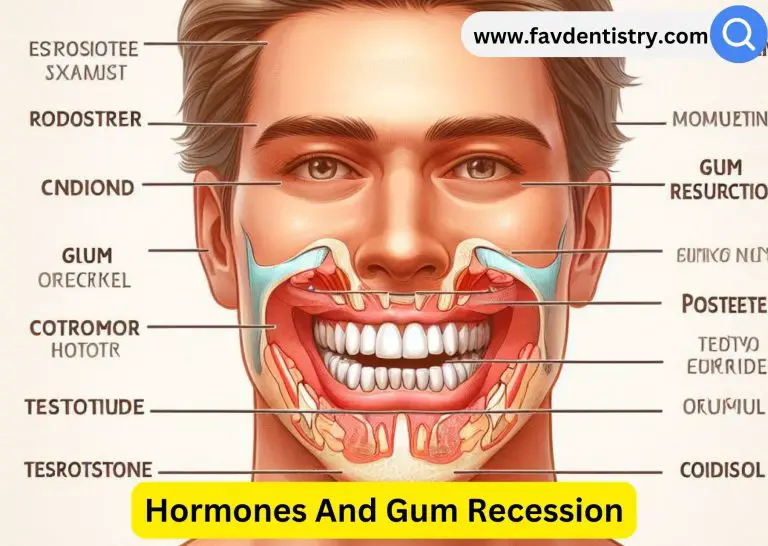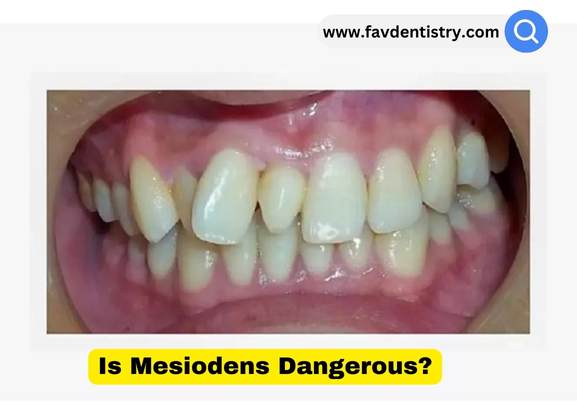Last Updated on 4 days by Dr. Michelle G. Brito
White horizontal lines on teeth are often indicative of dental fluorosis or enamel hypoplasia. These conditions typically result from variations in mineralization during tooth development.
White lines on teeth can be a cosmetic concern and may reflect past disturbances in enamel formation. The visual manifestation of these lines ranges from barely noticeable to significantly marked, depending on the severity of the condition that caused them.
Dental fluorosis typically arises from excessive fluoride exposure during the years when teeth are developing. Enamel hypoplasia, on the other hand, could stem from a wide array of factors including nutritional deficiencies, high fevers, or environmental influences. In any case, white horizontal lines on teeth signal the need for a professional dental evaluation. A dentist can assess the extent of the issue and recommend suitable treatments or cosmetic solutions to improve the appearance of affected teeth and ensure overall dental health.
Unveiling White Horizontal Lines On Teeth
When it comes to our smiles, the details can often give away more than just our moods; they can provide insights into our dental health. White horizontal lines on teeth are more than just aesthetic concerns; they could be signaling something significant about your oral wellness.
Importance Of Understanding Dental Stripes
Being informed about the various signs your teeth can present is crucial for maintaining their health. Dental stripes, such as white horizontal lines, can be early indicators of conditions requiring attention. By understanding what these markings mean, individuals can take proactive steps in consulting dental professionals and implementing preventative measures to avoid further complications.
Brief Description Of White Horizontal Lines As An Oral Symptom
The appearance of white horizontal lines on teeth should not go unnoticed. These lines are often symptomatic of dental fluorosis, a condition caused by excessive fluoride intake during the developmental stages of the teeth. It’s also associated with other issues such as enamel hypoplasia, a disorder where the enamel does not form correctly, leaving teeth vulnerable. Recognizing this symptom allows individuals to address their fluoride consumption and seek professional advice for proper enamel care.
Additional details can be provided in follow-up sections of the actual blog post
Symptoms Beyond The Smile
Upon flashing a smile, a set of white horizontal lines on teeth may reveal more than meets the eye. These lines, often subtle, can signal conditions that extend beyond mere aesthetics. They can suggest underlying dental issues not only visually apparent but potentially felt. A comprehensive understanding of the symptoms beyond the smile is essential for maintaining not just dental health, but overall well-being.
Visual characteristics of dental stripes
Visual Characteristics Of Dental Stripes
The presence of white horizontal lines on teeth can take various forms, and identifying these visual markers is the first step in addressing them. The lines may appear as:
- Faint White Lines: Barely noticeable lines that may become more visible when the enamel is dry.
- Thick Bands: Pronounced white or slightly off-white bands that may suggest developmental disturbances.
- Translucent Edges: The tips of the teeth might present a frosty or semi-transparent appearance.
These stripes are not always uniform; they can vary in width, opacity, and number across the dentition. On occasion, they might be interspersed with spots or other discolorations.
Possible sensations and associated discomfort
Possible Sensations And Associated Discomfort
While white horizontal lines on teeth are often harmless, they can sometimes be accompanied by physical sensations or discomfort. Individuals with these dental stripes might experience:
- Sensitivity to hot or cold temperatures, indicating thinning enamel that exposes the sensitive dentin underneath.
- A gritty texture upon running the tongue across the-striped areas, potentially a result of mineral loss.
- Pain or discomfort when brushing or flossing, possibly signaling a cavity or enamel erosion near the affected area.
These symptoms demand attention as they could hint at further dental health issues like enamel hypoplasia or early signs of tooth decay, and addressing them promptly with a dental professional is vital.
Decoding Dental Stripes Origin
White horizontal lines or stripes on teeth can spark curiosity and concern in equal measure. Often perceived as mere cosmetic irregularities, these markings can actually disclose much about a person’s dental history and the various factors influencing enamel development. A deeper look into the origin of dental stripes unveils a story written in layers of enamel, each one potentially revealing episodes from one’s past health and dietary patterns.
Enamel Hypoplasia And Its Role
Enamel hypoplasia stands out as a key player in the formation of white stripes on teeth. This condition refers to the inadequate development of enamel, the protective outer layer of the tooth. Factors ranging from genetic predispositions to environmental influences can disrupt enamel formation, leading to thin or uneven layers that translate into visible white lines.
Early detection and treatment can mitigate potential dental issues related to enamel hypoplasia. Regular check-ups with a dentist can help manage the condition and maintain oral health.
Impact Of Diet On Enamel Formation
The significance of a nutritious diet for robust enamel formation cannot be overstated. Nutrients like calcium and phosphate are pivotal in the development of strong and healthy enamel. Conversely, a diet high in acidic foods and sugary treats can erode enamel over time, leading to the manifestation of white stripes.
- Regular consumption of vitamin-rich fruits and vegetables supports enamel integrity.
- Monitoring intake of acidic and sugary foods may prevent enamel erosion.
- Adequate fluoride exposure is crucial in reinforcing the enamel against decay and wear.
The Significance Of Childhood Illnesses Or Trauma
White horizontal lines on teeth can also be a testament to experiences of childhood ailments or trauma. During the developmental stages of a child’s life, episodes of high fever or severe illness can interrupt normal enamel growth, leading to the formation of distinctive lines. Historical trauma to the teeth, whether from falls or accidents, could similarly impact enamel formation, manifesting as horizontal white stripes later on.
It’s essential to recognize that early intervention and preventive care can help mitigate the effects of such events on dental health:
- Maintaining a routine for oral hygiene in children.
- Ensuring timely dental check-ups, especially following illness or trauma.
Factors Amplifying Teeth Stripes
Striped teeth can often signify underlying dental issues, and recognizing the factors that amplify these conditions is essential. Variations in the appearance of these stripes, such as their width, color, and distribution, can be crucial indicators of different dental health concerns. Understanding the reasons behind these visual cues can empower individuals to seek appropriate dental care and take preventative measures. Here, we’ll explore the major contributors to the presence of white horizontal lines on the teeth.
Correlation With Dental Hygiene Practices
Good dental hygiene is the cornerstone of healthy, stripe-free teeth. Inadequate brushing and flossing can lead to plaque buildup, which calcifies into tartar, often visible as white or yellowish stripes on teeth. To maintain optimal dental health, include these practices:
- Brush twice a day for at least two minutes using fluoride toothpaste.
- Floss daily to remove plaque between teeth where a toothbrush can’t reach.
- Regular dental check-ups for professional cleaning and advice.
Fluorosis And Its Contribution To Dental Stripes
Dental fluorosis is a condition often caused by excessive fluoride intake during enamel formation. This condition can contribute to the teeth’s white stripe appearance. Consider the following:
| Age of Exposure | Fluoride Level | Effect on Teeth |
|---|---|---|
| Under 8 years old | High | Can lead to the development of white stripes or spots. |
| Above 8 years old | Standard | Minimal risk as teeth have developed. |
Limiting fluoride intake in young children is vital to preventing fluorosis and its effects on teeth appearance.
Genetic Influences And Their Prevalence
Genetics play a significant role in dental health, including the predisposition to white horizontal lines on teeth. Some individuals may be genetically inclined to have irregularities in enamel formation, leading to stripes. Here’s what you need to know about the genetic factor:
- Family history can indicate a tendency towards similar dental conditions.
- Genetic factors can affect enamel quality and result in varying stripe patterns.
- Understanding genetic influences allows for proactive dental care and prevention.
For those with a family history of dental stripes, a consultation with a dentist can provide customized care recommendations.
Navigating White Lines Treatment
Noticeable white horizontal lines on teeth can raise concerns about dental health and aesthetics. These lines typically signal changes in the enamel of the teeth and may point to a variety of causes, from fluorosis to enamel hypoplasia. Navigating the treatment for these white lines is essential for improving the appearance of your teeth and ensuring their health. This section delves into the different treatment options available, ranging from professional dental procedures to simple homecare tips.
Professional Dental Assessment And Diagnosis
Before any treatment can begin, accurately identifying the root cause of the white lines on your teeth is paramount. A professional dental assessment involves a thorough examination of your dental history, a physical examination of the teeth, and, if necessary, could include digital imaging techniques. Dentists can then pinpoint the exact nature of the enamel discrepancy and suggest a tailored treatment plan.
Dental Procedures To Address Enamel Discrepancies
Once a diagnosis is made, various dental procedures are available to correct enamel irregularities and diminish the appearance of white lines. Treatments could include:
- Microabrasion: A technique that gently removes a thin layer of enamel to reduce the visibility of white spots.
- Teeth whitening: Professional whitening treatments can sometimes balance the tooth color and minimize the contrast of white lines.
- Veneers or composite bonding: Custom-made shells or resin material applied to the teeth to cover surface imperfections.
- Topical fluoride: In some cases, applying fluoride can help re-mineralize tooth enamel and reduce white spots.
Homecare Tips For Maintaining Enamel Health
Maintaining the health of your teeth’s enamel is a critical step in preventing white lines and other dental issues. Simple homecare tips for enamel preservation include:
- Good Oral Hygiene: Brushing with fluoride toothpaste twice a day and flossing regularly to keep your teeth clean and free from plaque.
- Dietary Choices: Limiting foods and drinks high in sugars and acids which can erode tooth enamel and lead to decay.
- Regular Dental Check-Ups: Visiting your dentist for regular check-ups and cleanings to catch any early signs of enamel wear.
- Protective Measures: Wearing a mouthguard during sports can prevent teeth injury and enamel damage.
Integrating these practices into your daily routine can reinforce the strength and integrity of your tooth enamel, warding off those puzzling white lines.

Credit: smileangels.com
Prevention Strategies And Habits
Spotting white horizontal lines on your teeth can often be a sign of dental distress, indicating issues such as enamel hypoplasia or demineralization. But don’t fret! With mindful prevention strategies and habits, you can keep your smile gleaming and stripe-free. Establishing a robust oral care routine, adjusting your diet for enamel strength, and keeping up with your dental check-ups are key for maintaining that pearly white sheen.
Daily Oral Care Routines For Stripe Prevention
Maintaining a vigilant oral care routine is paramount in preventing those unsightly white stripes. Committing to a regimen that nurtures healthy enamel can avert the development of dental issues. Beginners and veterans of oral care alike, take note:
- Brush thoroughly at least twice a day with fluoride toothpaste to reinforce enamel and ward off decay.
- Floss daily to remove plaque and food particles that your toothbrush can’t reach.
- Use a mouth rinse to eradicate bacteria and bolster your mouth’s overall defense system.
- Don’t forget to replace your toothbrush every three months or sooner if the bristles fray.
Diet And Lifestyle Adjustments For Enamel Strength
Your diet plays a crucial role in the strength of your enamel. To fortify your teeth and shield them from demineralization, implement these dietary alterations:
| Do’s | Don’ts |
|---|---|
| Integrate dairy products like cheese and yogurt, which are rich in calcium. | Avoid acidic beverages like carbonated sodas and citrus juices. |
| Snack on crunchy fruits and vegetables to naturally clean your teeth. | Cut down on sugary treats and snacks that feed plaque-causing bacteria. |
| Drink plenty of water, preferably with fluoride, to support enamel health. | Lay off excessive coffee and tea that contribute to enamel erosion. |
Complement these efforts with lifestyle choices such as quitting smoking and reducing alcohol consumption which not only stain teeth but also reduce saliva flow, making your teeth more vulnerable to decay.
Regular Dental Check-ups And Their Importance
Regular dental check-ups are not just crucial; they are a central pillar in your oral health defense system. Here’s why they are indispensable:
- Early detection of enamel issues allows for timely treatment, nipping potential problems in the bud.
- Professional cleanings rid your teeth of harder to remove plaque and tartar accumulations.
- Customized advice from your dentist provides targeted care and helps adjust your oral health routine as needed.
Make a point to visit your dentist every six months or as recommended, ensuring your teeth remain free of those concerning white lines and stay as healthy and strong as ever.
Conclusion
Summing up, white lines on teeth may indicate minor enamel damage or be a sign of more prevailing dental conditions. It’s essential to maintain regular dental visits and adhere to proper oral hygiene. Early detection and treatment can prevent further dental issues.
Remember, a healthy smile is just as important as a beautiful one.





